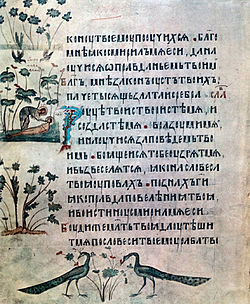

The Kiev Psalter of 1397, or Spiridon Psalter, is one of the most famous East Slavic illuminated manuscripts, containing over three hundred miniatures. It was written in 1397 by the scribe, Archdeacon Spiridon in Kiev, "at the command of Bishop Mikhail"; however, both scribe and patron had recently arrived from Moscow, and the decorations were probably added there later, in a refined and lively style, closely following a Byzantine 11th century Psalter.